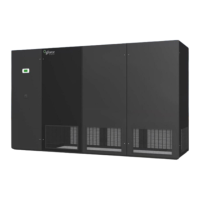Charging/Installation Work Procedures
The basic installation work procedures are the same for R410A and R407C refrigerants. But
the working pressure for R410A is 1.6 times higher than for R407C. Therefore, some of the
piping, installation and tools are special.
Special Service Equipment for R410A refrigerant
• High pressure manifold gauge set suitable for R410A pressure
• High pressure recovery machine suitable for R410A pressure
• High pressure recovery tank suitable for R410A pressure
(Ref: DOT 4BA400 or ABW400)
Triple Evacuation and Dehydration Procedure
Data Aire highly recommends a triple evacuation to be carried out on all Data Aire units to
ensure the highest quality moisture removal. Moisture prevents the proper operation of both
the compressor and the refrigeration system. Non-condensable and moisture reduces service
life and increases condensation pressure, which causes abnormally high discharge
temperatures that can degrade the lubricating properties of the oil. The risk of acid formation is
also increased by non-condensable and moisture and this condition can also lead to copper
plating. These phenomena may cause both mechanical and electrical compressor failure. The
typical method for avoiding such problems is to triple evacuate the system.
It is of the utmost importance that proper system evacuation and leak detection procedures be
employed. Good evacuation includes frequent vacuum pump oil changes and large diameter,
short hose connections to both high and low sides of the system (all refrigerant lines: suction
line, discharge line, and liquid line) preferably using copper tubing, vacuum rated or braided
hose.
All valves in the system, solenoid valves, Electronic Expansion Valves (EEV) or Thermal
Expansion (TXV), ball valves, and service valves (if the compressor is equipped), need to
remain open during the vacuum procedures and the system must be purged with nitrogen. We
recommend using a solenoid magnet tool to hold the liquid line solenoid valve(s) open during
this procedure.
A deep vacuum gauge capable of registering pressure in microns must be attached to the
system on the liquid line service port before the EEV or TXV and should be at the farthest point
in the system for most accurate vacuum readings. A shut-off valve (suggest a Schrader valve

